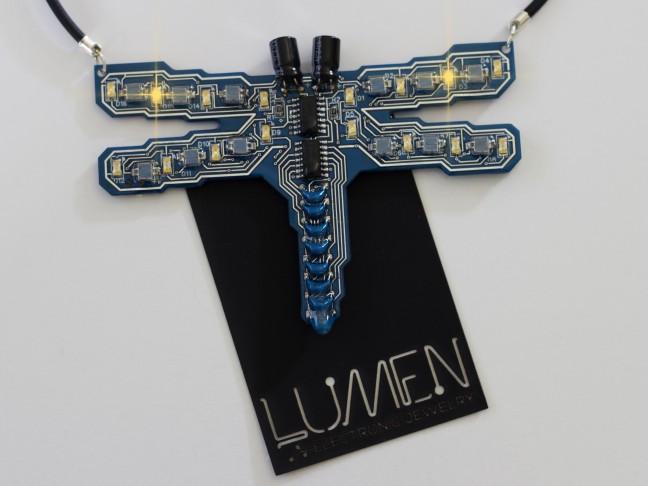Brother-sister duo Marty and Robin Lawson have teamed up under the name Lumen Electronic Jewelry, using their passion for science to create pieces of jewelry that literally “dazzle.”
The engineers make jewelry with little twinkling LED lights that are powered by tiny solar panels incorporated in the design, all on a circuit board, Robin said.
Lumen Electronic Jewelry got its start in 2010 on a Fourth of July family trip, Robin said, because she became bored with making beaded jewelry. She said the idea of putting LED lights on jewelry came up, but she did not want to have a battery on it that would be heavy and run out quickly.
“If people bought it, and it had a battery, but then the battery died, they probably wouldn’t replace it,” Robin said. “I mean, how many of us have watches that we’ve never replaced the battery on?”
As a potential workaround to this problem, she said, Marty suggested that they put small solar panels on the jewelry.
“Nobody else was using the combination of solar power to charge LED lights on elaborate jewelry,” Robin said. “A couple of months later, Marty came back out of his lab with this mass of wires, proving that it could be done.”
From there, the enterprise began, they said, but not without the challenge of having to create several designs to improve upon the function of the circuits using their knowledge of physics, chemistry and engineering.
To do so, the duo said they leveraged their backgrounds as engineers.
“I had done a fair amount of work with electronics and assembling, but never down at this really small power level, where microwatts are quite useful,” Marty said.
The energy captured by the small solar cells on the jewelry piece needed to be sufficient in powering the energy-efficient LED lights, Marty said. The original model was designed to store power until it had enough to run a motor, but then it would dump it all, he said.
The Lawsons said their new and improved pieces have switches on them that allow the LED lights to blink in a fixed pattern using the power that has been stored in the circuit boards.
“It’ll go for about 5 hours on a full charge before it needs to be charged again. But if I’m wearing it out all day, it’ll just keep charging,” Robin said.
After assembling a piece, which takes anywhere from thirty minutes to two hours, Robin said she has to coat the piece in a chemical called Epoxy, which is a hard and clear adhesive that protects the pieces from shorting out or tarnishing while someone is wearing them.
“I wear them out dancing because they look really cool in a club, and I sweat on them. Sweat will tarnish and short out electronics because there’s salt and water in there,” she said. “If they stop working, we know we need to fix something.”
Both Robin and Marty said while their ability to refine their jewelry depended upon their experience with the scientific method and engineering principles, it’s their knowledge of each other’s quirks that has helped them become successful partners in business.
“Since we’re related, we’re stuck with each other. I know how Marty thinks, and he knows how I think. We know each other’s quirks, and we don’t take them personally,” Robin said.








